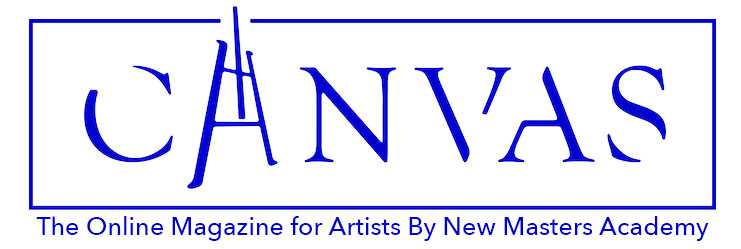As artists, we know there is nothing that feels more satisfying than being in a creative flow. When creating takes us on a journey of unexplored territory we can see the growth in our work and we feel it inside of ourselves.
Often growth seems stagnant for a frustrating period until unexpectedly inspiration hits again. Unfortunately, these highs and lows in the process of creating can take a toll on our mental health.
As May is Mental Health Awareness Month, observed in the United States, and with much in the news regarding mental health awareness, perhaps it is time to tackle the issues of creativity, artists, and mental wellness and look at this issue from a different lens.

The eccentric artist who creates out of impulse doesn’t fit the mentally stable type. Therefore, many artists believe that their mental struggle is needed to be able to reach creative heights. But, do we really have to accept pain as part of creating, or is this a notion that keeps us from leading a balanced life as artists?
Parsing out the delicate strands of creativity, mental illness, and eccentricity is not a simple matter.
For this reason, I sought out the expertise of clinical psychologist Dr. Andrea Weiss.
“Creativity and mental illness are not mutually exclusive,” she explained. “Although, mental illness does certainly not make a person creative. Nor will creativity induce mental illness.”
“It may be that during a manic episode, however, an artist can indeed be quite prolific, but this can not be sustained. There are times when depression follows this activated state resulting in diminished mood and reduced energy.”
Many believe that mania was a prominent condition in Vincent Van Gogh’s life. However, these episodes were always followed by exhaustion and depression, and ultimately, suicide. Therefore, a bipolar disorder or manic depression diagnosis makes sense with the accounts of these episodes in Van Gogh’s case.
Reports of the mental asylum include hallucinations, nightmares, manic episodes, depressive episodes, stupor, absent-mindedness, impotence, insomnia, and anxiety.
But society has glamorized and idealized the mental anguish and suffering of those like Van Gough.

As much as people feel it is stigmatized in mainstream society, conversely, mental illness is glamorized in the art arena. Glamorizing mental illness diminishes and trivializes the real suffering and makes those vulnerable already even more so, and, perhaps less likely to seek help, believing that it will make them less ‘creative’.
The notion that creativity somehow begets or is enhanced by mental instability is dangerous and inaccurate.
Even the belief that this could be so, young artists, romanticizing the cliché, are quick to give themselves over, so to speak, to ‘reckless abandon’. But examining the term more closely suggests something more dangerous, and in opposition of a profession in the arts.
‘Reckless abandon’, defined as rash, ‘unrestrained impulsiveness, enthusiasm, or zeal,’ has a sexy sort of connotation, but is the betrayal of one’s true nature, and is relinquishing the actual traits that support and yield lasting success as an artist, such as discipline, commitment, resilience, and humble pursuit of beauty.
Camille Claudel, the most promising sculptor of her day, ended up institutionalized. This is no way to go.
Languishing in an insane asylum, Camille writes in 1935 to a friend, ‘I live in a world that is so curious, so strange. Of the dream which was my life, this is the nightmare.’

“The most important action if one believes they may have a mood disorder is to both have it appropriately diagnosed and to follow the recommendations of the health care provider,” says Dr. Weiss.
“Psychoeducation (providing patients and their families information about the illness and its treatment) is also critical so that they can work together with their mental health professional for the best overall outcome.”
But often, artists need certain freedom to be outside mainstream society. This is the uncharted waters of eccentricity and with sometimes blurry lines regarding mental health.
William Heath Robinson, English cartoonist and illustrator once said, “I really have a secret satisfaction in being considered rather mad.”
Because there is freedom associated with madness, artists are drawn to identify with it. No one expects conformity if you are mad and artists need freedom, inner freedom, to question and to take risks.
Taking risks is for sure a big part of being creative. But before we let the idea of a “free-flowing state of mind” take over our creative process, let’s ask ourselves if there is a way to do this in a healthy manner. Suppose we manage to take charge and be present in the creative process; our learning experience is built on a strong sense of self-awareness and will guide us through all the lows and highs in life as an artist.
Creating beautiful art and appreciating art can have a healing effect on one’s heart and mind. Perhaps the reason lies in the components of what in part constitutes the definition of balance.
Herophiles, physician from ancient Greece known as the father of anatomy, understood, “When health is absent, wisdom cannot reveal itself, art cannot manifest, strength cannot be exerted, wealth is useless, and reason is powerless.”
In addition to being creators, we are also part of creation, so we must remember to create a life of beauty and balance and truly make our life our greatest work.



Leave A Reply